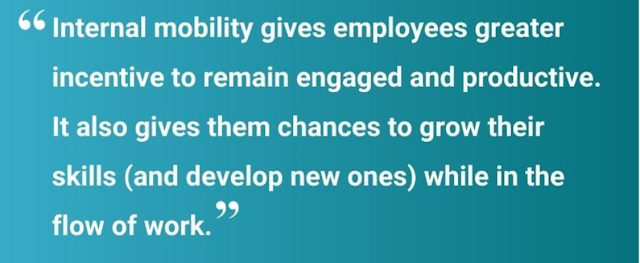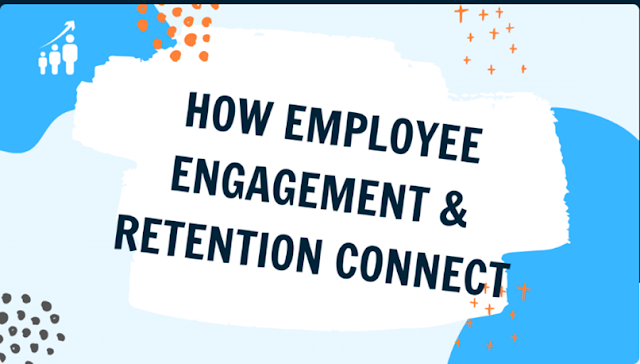What Should Performance Reviews Look Like in 2023?
Figure 01
Performance reviews have come a long way since the days of
paper files locked away in a cabinet. Today’s reviews are smarter, faster, more
inclusive, and better. Using a performance management system is one of the best
ways to update and overhaul your review process completely, but it doesn’t mean
you have to change the heart of them.
Instead, update your 2023 performance reviews to include what really matters, eliminate things that don’t matter anymore, and get the buy-in from managers, employees, and the executive board.
Eliminating Bias
Performance
reviews are an essential part of any organization’s performance management
process. However, they can often be biased and unfair, making employees
demotivated and disengaged.
The key to eliminating bias in performance reviews lies in
understanding the different types of biases and how they can be avoided. By
understanding the various biases that may be present in a performance review,
organizations can ensure that their employees receive fair and unbiased
feedback on their performance.
Organizations should also ensure that all performance reviews
are conducted objectively, without personal bias or prejudice influencing the
outcome. This can include implementing policies and procedures to prevent
biased language and behavior during the review process and providing training
for managers on how to conduct objective reviews. By taking these steps,
organizations can ensure that their performance reviews are free from bias and
provide accurate employee feedback.
Most
performance management software has features in place to eliminate bias and
help managers see instances when they may have bias.
Using 360-Degree Reviews
360-degree reviews are becoming an increasingly popular way
for employers to get employee feedback. These reviews provide a comprehensive
picture of an employee’s performance by gathering insights from their peers,
managers, and direct reports.
The 360-degree review process helps employers gain valuable
insights into the strengths and weaknesses of their team members, enabling them
to make informed decisions about how to manage their teams best. It also allows
employees to receive constructive feedback from multiple sources, allowing them
to identify areas for growth and improvement.
By
leveraging 360-degree reviews, employers can ensure that they are getting
accurate and reliable feedback on the performance of each employee, which will
ultimately help them build a stronger and more effective team.
Continuous Feedback
Continuous feedback is an important part of any successful
organization. It helps keep employees engaged and motivated while providing
them with the necessary feedback to improve their performance. Keeping your
feedback style consistent is a big help for employees who are sometimes anxious
or for high-achieving employees who thrive on feedback and growth.
Continuous feedback can help create a culture of
collaboration and trust in the workplace and provide employees with ongoing
support and guidance. It also allows managers to quickly identify areas where
employees need improvement and provide them with targeted advice on improving
their skills. By doing this on a regular basis, managers can make real-time
improvements for their employees that will impact the work immediately instead
of several weeks or months down the road.
By providing
employees with continuous feedback, organizations can ensure that they get the
most out of their workforce and help them reach their full potential.
Automation Keeps Things Moving
Figure 02
Automating performance reviews is becoming a popular way for companies
to streamline their HR processes. Automation can help reduce the amount of time
spent on manual tasks and provide more accurate data-driven insights into
employee performance.
Performance review automation can help HR teams better manage
employee performance data, automate appraisals and feedback, and improve the
accuracy of their decisions. Automated performance reviews also allow companies
to measure employee performance objectively and accurately over time.
Automating performance reviews is becoming an increasingly
important part of HR automation, as it allows companies to save time, money,
and resources while still providing valuable insights into their employees’
performances.
It also helps employees! When using something like Trakstar
Perform (formerly Reviewsnap), employees get email reminders and, if you use an
integration with something like Slack or Teams, a notification that reviews are
due. This helps keep them accountable and on track, making for better
self-performance reviews.
You Need Actual Data
Performance review data has become increasingly important in
HR departments. It helps companies understand how their employees are
performing and identify areas of improvement. By collecting performance review
data, companies can track employee retention metrics, analyze trends, and make
more informed decisions about their workforce.
Data collected from performance reviews can also be used to develop better recruitment, training, and retention strategies. Companies can use this data to gain insight into employee performance and identify potential areas for improvement. With the help of data analytics, companies can also measure the effectiveness of their existing HR processes and make necessary changes accordingly.
Conclusion
performance reviews in 2023 have transformed into a dynamic, continuous, and employee-centric process. The focus has shifted from rigid evaluations to collaborative conversations that foster growth, development, and a sense of purpose. These changes reflect a deeper understanding of the link between employee engagement, productivity, and organizational success.
References
Dulewicz,
V., & Higgs, M. (2003). Assessing leadership dimensions, team
effectiveness, and organizational performance. International Journal of
Selection and Assessment, 11(1), 3-10. [Online] Available at: http://dulewicz.com/publications.htm [Accessed
on 03th August 2023]
Murphy, K.
R., & Cleveland, J. N. (1995). Understanding performance appraisal:
Social, organizational, and goal-based perspectives. Sage Publications.
[Online] Available at: https://books.google.lk/books?hl=en&lr=&id=CnpuE09Vit0C&oi=fnd&pg=PP15&dq=Murphy,+K.+R.,+%26+Cleveland,+J.+N.+(1995).+Understanding+performance+appraisal:+Social,+o [Accessed
on 03th August 2023]
Smither, J.
W., London, M., & Reilly, R. R. (2005). Does performance improve following
multisource feedback? A theoretical model, meta‐analysis, and review of
empirical findings. Personnel Psychology, 58(1), 33-66. [Online] Available
at: https://psycnet.apa.org/record/2005-11341-002
Image 01-
Available at: Performance Management In 2023 - HR.com
[Accessed on 15th August 2023]
Image 02-
Available at: How To Automate The Boring Stuff – 6 Hacks To Make Life Simple
[Accessed on 15th August 2023]
Clip 01 Reduce Bias In The Workplace By Following
These Tips from .. [Accessed on 16th August 2023]
Clip 02 What is 360 degree feedback? [Accessed on 15th
August 2023]





Appraising the employee achievement is a way to motivate them to gain best productivity into the organization. HR has to maintain a suitable performance appraisal module in order to satisfy both employee and organization.
ReplyDeleteIt is the duty of every HR manager to provide a performance review to the employee that can ensure fair and unbiased feedback. It's worth talking about.
ReplyDelete
ReplyDeletePR has evolved into a dynamic, employee-centered process, emphasizing collaborative conversations to nurture growth, development, and purpose, driven by a recognition of the connection between employee engagement, productivity, and organizational success.
Performance reviews is an essential part in HRM. It helps to track employees’ performance, identify their strengths and weaknesses, and also it has some disadvantages too, Performance reviews can cause stress among employees.
ReplyDelete